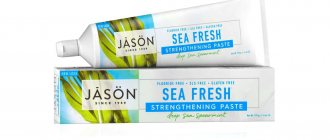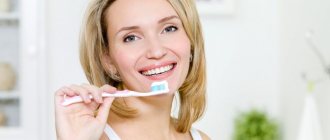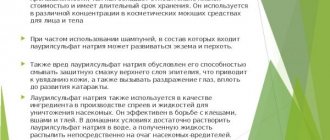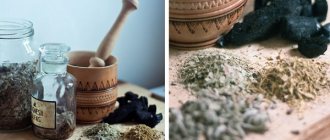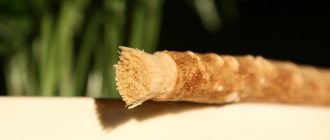17.03.2018
What kind of TOOTHPASTE can you “eat” and in what cases is it better to consult a doctor!
“Most toothpaste is made up of fluoride, a fine abrasive, and a foaming agent. Often parents are AFRAID of taking toothpaste for children with fluoride and take it without it at all. In order to clean your teeth well, you need to take a paste with a fluoride concentration starting with a dosage of 500 ppm. It is important for your child to choose children’s toothpaste according to his age! Fluoride helps prevent tooth decay by maintaining strong tooth enamel and inhibiting the growth of bacteria in plaque. There is no need to be afraid of fluoride itself!” - says pediatric dentist, member of the Association of Preventive and Pediatric Dentistry Yousefian Ehsan. (Shortcut?) To protect children from the dangers of fluoride in toothpaste, parents should treat toothpaste like any other harmful chemical and keep it locked up when not in use. Doctors recommend supervising children under 6 years of age when brushing their teeth and reminding them to spit out the toothpaste rather than swallow it. Parents should also teach children to use toothpaste no larger than a pea-sized amount. Infants younger than 6 months should never be exposed to fluoride toothpaste.
How to use it correctly?
Instructions for use read as follows:
- Take a toothbrush; it is advisable to give preference to soft or medium-hard bristles. You need to moisten it a little in warm water.
- A small amount of powder must be brought to a mushy state. Pour the powder into a separate container and add a couple of drops of water.
- Dip the brush into the resulting mixture.
- Brush your teeth as usual.
You should also consider some useful tips from dentists:
- Do not try to brush your teeth with dry powder; it must be moistened with water.
- It is best to alternate tooth powder with gel paste.
- It is not recommended to use it if you have sensitive enamel.
How much toothpaste can you eat without causing health consequences?
Children's toothpastes often have a pleasant scent that can entice children. This results in children often swallowing toxic doses of the toothpaste. Photo: Peter Cade/Getty Images This is not funny because initially many people (including myself at one time) never even thought that the current toothpastes with which we regularly brush our teeth could pose a health hazard or even life. However, this is true. Paradoxically, modern toothpastes contain many synthetic ingredients that do more harm than good. And although dentistry in Kyiv is developing quite quickly, some dentists are not able to recommend truly safe toothpaste to their patients.
Here are some reasons why we should be more careful when choosing toothpaste.
1. Triclosan is an antibacterial agent used in soaps, deodorants, shampoos, toothpaste, mouthwash. Triclosan in toothpastes aims to destroy opportunistic flora. However, subsequent studies have proven that triclosan promotes the development of bacteria resistant to antibiotics, causes thyroid dysfunction, disrupts the production of sex hormones and, consequently, sperm quality.
2. Sodium lauryl sulfate (SLS) and sodium loreth sulfate (SLES). Sodium lauryl sulfate is used as a cheap detergent and foaming agent. In short, it is used to clean surfaces, use it as a degreaser for engines, and as a car wash product.
Using lauryl sulfate increases the risk of developing aphthous ulcers. Lauryl sulfate makes the oral mucosa vulnerable to irritants, which lead to ulcers. Sodium Loreth Sulfate (SLES) is a similar component found in toothpaste. It is also a very cheap and therefore beneficial foaming agent.
3. Some toothpastes, especially those with a whitening effect, may contain strong abrasives that perform the main cleaning function. These are substances that mechanically polish tooth enamel or, like sandpaper, erase the top layer. Abrasives include mainly silicon compounds (silicon oxide) and less commonly calcium carbonate (chalk). Do not overuse whitening, otherwise your teeth will become transparent.
4. And finally, the most dangerous thing is fluoride (fluoride). Fluoride is considered as an effective remedy against caries, as it promotes remineralization and forms the substance fluorapatite on the tooth enamel. Fluorapatite is a durable mineral that prevents caries and tooth decay. That's why it used to be quite common to hear advertisements about the fluoride content of toothpaste.
However, at the same time, fluorine is very toxic. Regular excess of fluoride concentration in the body can lead to fluorosis (a disease of the skeletal system and teeth). According to experts, currently 68% of the occurrence of fluorosis is due to toothpastes with fluoride.
Since 1991, fluoridated toothpaste packages have required warning labels on packages in the United States. For example: “WARNING, keep out of reach of children under 6 years of age. If you swallow more than enough toothpaste to brush your teeth, call your doctor or local poison control center immediately."
Even a single use of fluoride toothpaste can be dangerous for children. Children's toothpastes often have a pleasant scent that can entice children. This results in children often swallowing toxic doses of the toothpaste. Sometimes this happens by accident, as children have a powerful swallowing reflex. It is very dangerous.
Monitor children closely as fatal fluoride poisoning can occur if:
•2 year old will eat 42% of the tube •4 year old will eat 56% of the tube •6 year old will eat 70% of the tube
Myths about tooth powder
The main myth is that it causes enormous harm to teeth. In fact, if the teeth are in healthy condition and if all the rules are followed, then harm is practically excluded. Negative changes can only occur if you use the powder on an ongoing basis.
Another common misconception is poor quality plaque cleansing. In fact, according to statistics, this product copes with this task even better than the most expensive toothpaste from a well-known manufacturer.
How to properly teach your child not to swallow toothpaste
The first and main requirement is not to scare. You can’t say that “if you swallow it, your tummy will hurt.” Such words simultaneously evoke fear and curiosity to “try.” And even if it has never occurred to the baby to swallow the mixture, he will definitely do it.
The best thing is to lead by example. Brush your teeth together, encourage them with the words “you’re an adult now, so don’t forget to spit out the toothpaste...”, etc. Psychologists recommend teaching your child to spit out toothpaste at the age of 2.5-3 years. During this period, the child is already socially adapted and can understand the requirements and prohibitions. In addition, the need for the use of therapeutic and prophylactic toothpastes arises at approximately the age of 4 years. So parents will have a whole year to teach their child not only how to properly brush their teeth, but also how to spit toothpaste.
What can happen if you swallow toothpaste
Every child can swallow toothpaste. But dangerous consequences do not always occur. Most products for children do not add fluoride and other toxic substances that disrupt the functioning of the gastrointestinal tract and internal organs.
The following patients are at risk for adverse reactions:
- those suffering from allergic reactions to natural and chemical components (food, house dust, medications, animal hair);
- having gastrointestinal disorders, inflammation of the mucous membrane, indigestion, gastritis, ulcers and other diseases;
- constantly swallowing large amounts of paste (a cumulative effect with intoxication appears).
If a child or adult swallows a small amount of the product, it is harmless. The product contains cleaning agents and saccharin. These components are harmless. But many products contain the following chemicals that cause intoxication:
- sodium lauryl sulfate – forms foam, in large doses is a carcinogen;
- fluorides – strengthen enamel, but can cause intoxication;
- parabens - preservatives designed to increase shelf life, are toxic in large quantities;
- Triclosan is an antibiotic that is part of medicinal products against caries, causing resistance in pathogenic microorganisms with frequent use.
If the patient constantly ingests the product, the following symptoms will occur:
- intoxication with fever, vomiting, diarrhea;
- allergies with rash, itching, burning, peeling, inflammation, redness of the skin and mucous membranes;
- persistent intestinal disorders with impaired stool formation;
- toxic effect on the liver and kidneys, inflammation of organs;
- inflammation of the gastrointestinal tract - esophagitis, gastritis, duodenitis, colitis (high risk of gastritis and ulcers with the formation of bleeding).
Attention!
Due to the risk of complications, swallowing toothpaste is contraindicated. The eaten product causes inflammation and intoxication.
If a child swallows children's toothpaste
For small children, only baby products are used. They are distinguished by the absence of fluorides and other harmful substances. But if a child has swallowed a large amount of a cleaning product for children, it is recommended to adhere to the following rules:
- give a sorbent (activated or white carbon, Enterosgel, Polysorb);
- if the child is allergic, he is given an antihistamine (Cetrin, Erius, Zodak, Claritin), it is advisable to use a drug of the latest generation that does not cause drowsiness;
- call an ambulance or go to the hospital department.
If the product was for children, the doctor will not rinse the stomach. Parents must provide the packaging so that the pediatrician can study the composition of the toothpaste . In the absence of harmful substances, he will recommend therapy if symptoms of adverse reactions appear.
Four important features of toothpaste
Many parents choose toothpastes for their children based solely on cost and brightness of the packaging, often succumbing to big phrases like “dazzling whitening” or “incredibly durable teeth protection.” And here their huge mistake is that they do not study the composition.
Sensitivity
Healthy teeth need nothing more than fluoride. But if the dentist diagnoses their sensitivity, the fluoride paste should be accompanied by strontim chloride, which relieves discomfort. Ideally, the fluoride content in the paste should be 1350-1500 units. per million. In other words - 0.145% by weight of the paste, or 1450 ppm.
Why do teeth need fluoride?
Whitening
Toothpaste companies have gotten great at advertising their “whitening” products. But professionals say: more than half of tooth whitening toothpastes are not suitable. With their help, minor darkening of the enamel can still be eliminated. However, yellow teeth will have to be dyed white at the dentist's office. Much more effective than using any whitening pastes is simply rinsing your mouth with a solution of baking soda after a cup of tea: this method will keep your enamel unstained longer.
Toothpastes do not always help whiten teeth
Freshness
The person everyone tries to stay away from because of bad breath has probably at least once tried to improve the situation with the help of special pastes promoted by manufacturers with words like “fresh breath.” So: such a paste helps in 22% of cases of gingivitis - inflammation of the gums, one of the causes of unpleasant odor. The degree of effectiveness for periodontitis, which can also cause an unpleasant odor, has not been clarified at all.
Important! Bacteria on the tongue is also a possible cause of halitosis. It also needs to be cleaned every time.
Toothpaste will help freshen your breath
Foam
Toothpaste usually foams due to the content of sodium lauryl sulfate - SLS, also known as sodium lauryl sulfate. Ordinary soap suds, washing away food residues everywhere. But with increased sensitivity of the gums, SLS can very easily cause stomatitis. If your gums are sensitive, you should use a paste that does not contain this additive.
It is better to choose pastes without SLS
What components may be beneficial?
Baby toothpastes may contain enzymes like papain. Thanks to them, the plaque becomes softer and may even dissolve. Thanks to the content of milk enzymes (lysozyme, lactoperoxidases, glucose oxidases, lactoferrin), the child’s mouth becomes better protected from bacteria, plaque from the teeth is removed more gently, local immunity becomes stronger, and saliva better protects the teeth. And lactic enzymes better clean the enamel throughout the entire dentition. The protein casein makes it harder for bacteria that cause tooth decay to attach to teeth, and the amount of calcium and phosphate in the enamel increases.
Important! Biologically active organic calcium from eggshells is also useful. Thanks to it, the enamel of baby teeth is formed better.
You need to buy those pastes that have a high content of useful components
Differences in the composition of children's and adult toothpastes
When buying special children's toothpastes, parents think that they will be able to protect their children from the harmful effects of harmful substances. Fortunately, in most cases, pharmaceutical companies do not deceive us. Products for children have a fairly well-thought-out composition; they do not contain antiseptics, fluoride or calcium, and there are no pyrophosphates.
But even toothpastes for children contain significant amounts of foaming agents and some other chemicals. As a result, it is recommended to spread a small amount of the substance on the brush - no more than a pea.
Children's gels are made so that the growing body receives the necessary substances in the required quantities as it grows. It is very important to select a special toothpaste for a child at the moment when his milk teeth begin to be replaced by molars. Children's gels are designed to be more gentle and gentle so as not to harm thin enamel and ensure more harmonious growth of teeth. Just as adult pasta is not suitable for children, and vice versa. Why? Fully formed teeth will not have enough strength of a gentle solution - with constant use of children's gel there is a risk of developing caries.
About fluoride
To prevent the development of caries, it is best to use pastes with fluoride in organic form. That is, it is important that the composition contains olafur or, alternatively, amino fluoride. There is less fluoride in children's toothpastes than in analogues for adults. For example, in products from SPLAT Junior this is the fluorine content: in fluoridated foam there is 0.01% of this element, and in pastes for children 3-8 years old it is only 0.05%. The paste can provide the teeth with fluoride and calcium, at best, by 30%.
We have not listed all the problems caused by toothpastes that include inexpensive, recently popular, but no less dangerous components. And therefore, the important, necessary and useful habit of reading is becoming increasingly widespread among parents, from which, in fact, hygiene products for their children are made. That is why those pastes that cause allergies, undermine health, or pose other dangers for the child so quickly lose popularity.
